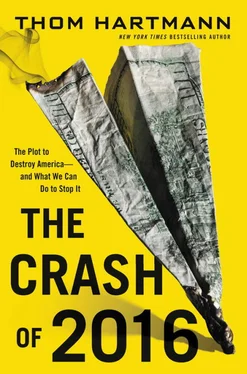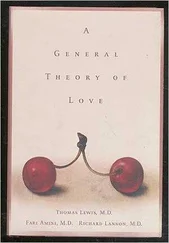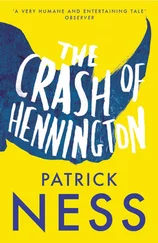Reagan’s Royalist revolution was continued and expanded through the presidencies of George Herbert Walker Bush and Bill Clinton, “ending welfare as we know it” and Clinton’s declaration that “the era of big government is over.”
So, a generation after Reagan, when a young senator from Illinois came along promising change in the midst of another crisis, a nation pregnant with a new generation’s revolution found her new president.
A dozen American generations built this nation and sustained it, with each one producing its own revolution.
But Jefferson also knew that at times these revolutions would not be achieved so easily. That old forces—be they those of monarchy, aristocratic slaveholders, or Economic Royalists—would conspire to keep power and deny a new generation its revolution.
He was blunt about the consequences of such a thing happening, writing, “If this avenue [of periodic revolution] be shut to the call of sufferance, it will make itself heard through that of force, and we shall go on, as other nations are doing, in the endless circle of oppression, rebellion, reformation; and oppression, rebellion, reformation, again; and so on forever.” 110
John F. Kennedy echoed this warning 150 years after Jefferson when he said, “Those who make peaceful revolution impossible will make violent revolution inevitable.” 111
Which brings us back to the Caucus Room on the night of President Obama’s Inauguration Day.
Newt Gingrich was there. So, too, were some of the most prominent Republican members of Congress, including Representatives Eric Cantor, Paul Ryan, and Kevin McCarthy. Senators Jon Kyl, Jim DeMint, and Tom Coburn were there. And Frank Luntz, Republican pollster and Fox News regular, was there, too. They all sat around a square table facing each other like a group-therapy session.
After all, Democrats were now in control of the White House, the Senate, and the House of Representatives for the first time since before the Reagan Revolution and they were talking about things like repealing tax cuts for the top 1 percent, reforming health care, passing a carbon tax, and spending huge amounts of money to rebuild America reminiscent of Franklin Roosevelt’s WPA.
Hours earlier, a man who campaigned on “fundamentally transforming the United States of America” gave his Inaugural Address to the largest gathering of people the National Mall in Washington, DC, had ever seen.
A new direction is exactly what the nation pregnant with revolution wanted. And the nearly 70 million people who voted for Barack Obama (the most votes ever received by a president of the United States in the history of the nation) hoped that he was the man to bring about this revolution—just as he campaigned he would do.
So, the disciples of Reagan sat together eating their steaks and digesting the new political reality of Democrats in charge and everything they’d worked for over the last thirty years being completely wiped out. They talked about how they’d got to this point, what had gone wrong, and, most important, what to do now.
In his 2012 book Do Not Ask What Good We Do: Inside the U.S. House of Representatives , Robert Draper recounts the outcomes of this meeting, writing, “The dinner lasted nearly four hours. They parted company almost giddily. The Republicans had agreed on a way forward… show united and unyielding opposition to the president’s economic policies… Begin attacking vulnerable Democrats on the airwaves… Win the spear point of the House in 2010. Jab Obama relentlessly in 2011. Win the White House and the Senate in 2012.” 112
Representative Paul Ryan warned that everyone “had to stick together.” Representative Kevin McCarthy chimed in, saying, “We’ve gotta challenge them on every single bill and challenge them on every single campaign.”
The seeds of the Powell Memo, planted nearly forty years earlier, had grown into giant spruces of corporatocracy with branches wrapped around our political, economic, and media institutions.
Just as the lessons learned in the Powell Memo were used to take power in the 1970s, they would be used to keep power during another time of crisis.
The Royalists in the Caucus Room gambled that if only this coming Progressive Revolution could be handcuffed for just two years, then maybe the revolutionary spirit of the American people could be broken, or better yet hijacked, and the Reagan Revolution might weather the storm and even exploit this crisis to push their own revolution further. That was the plan at least, and the Republicans in the room were confident they could pull it off.
As Newt Gingrich said after dinner, “You will remember this day. You’ll remember this as the day the seeds of 2012 were sown.”
Republican Representative Pete Sessions from Texas, in an interview with the National Journal , compared the Republican strategy moving forward to a “Taliban insurgency.” 113
And so a suicide pact was drawn up the night that President Obama was sworn in to office, in January 2009. Which meant that even before Barack Obama went to sleep on his first night as president of the United States, he was dealing with an insurgency.
With the help of prominent media outlets, the Royalists, now a political minority, would engage in a scorched-earth strategy to defeat a coming Progressive Revolution, even if it meant crashing the United States as we know it. If they were going down, then the rest of the nation was going down with them.
Which is exactly what happened.
CHAPTER 8
The Royalists Strike Back
We needed to have the press be our friend… We wanted them to ask the questions we want to answer so that they report the news the way we want it to be reported.
—Tea Party Senate candidate Sharron Angle, August 2, 2010
The very first Great Crash in our nation’s history—that of the economic exploitation in colonial America, which was followed by the Revolutionary War—was kicked off by a “Tea Party.”
We learn about the Boston Tea Party in elementary school. But rarely do we learn what really triggered this event (another consequence of the Great Forgetting).
As was mentioned in chapter 1, the Boston Tea Party was a revolt against the Economic Royalists, who had seized the British government and passed the world’s largest corporate tax break at the time, devastating colonial tea sellers.
The purpose of the Tea Act was to increase the profitability of the East India Company to its stockholders (which included the king) and to help the company drive its colonial small-business competitors out of business. Because the company temporarily no longer had to pay high taxes to England and held a monopoly on the tea it sold in the American colonies, it was able to lower its tea prices to undercut those of the local importers and the mom-and-pop tea merchants and teahouses in every town in America.
In response, in December 1773, a group of Bostonians boarded ships belonging to the East India Company and committed one of the largest acts of corporate vandalism in the history of the world—throwing what would be today millions of dollars’ worth of tea into the harbor.
War would soon follow.
Today, as the great cycles come back around, and battle with the Royalists reconvenes, the “Tea Party” has returned. Only this time, the Royalists are the ones dressed silly.
It’s hard to figure out when exactly the twenty-first-century Tea Party “started.”
The sentiment that government should be supersmall, that taxes are evil, and that social safety nets encourage laziness has existed in America since its founding, albeit usually only on the fringes of society. But what exactly caused tens of thousands of Americans around the country to start dressing up in eighteenth-century garb and dangling tea bags from tricornered hats in the summer of 2009 is a little trickier than those simple slogans.
Читать дальше












